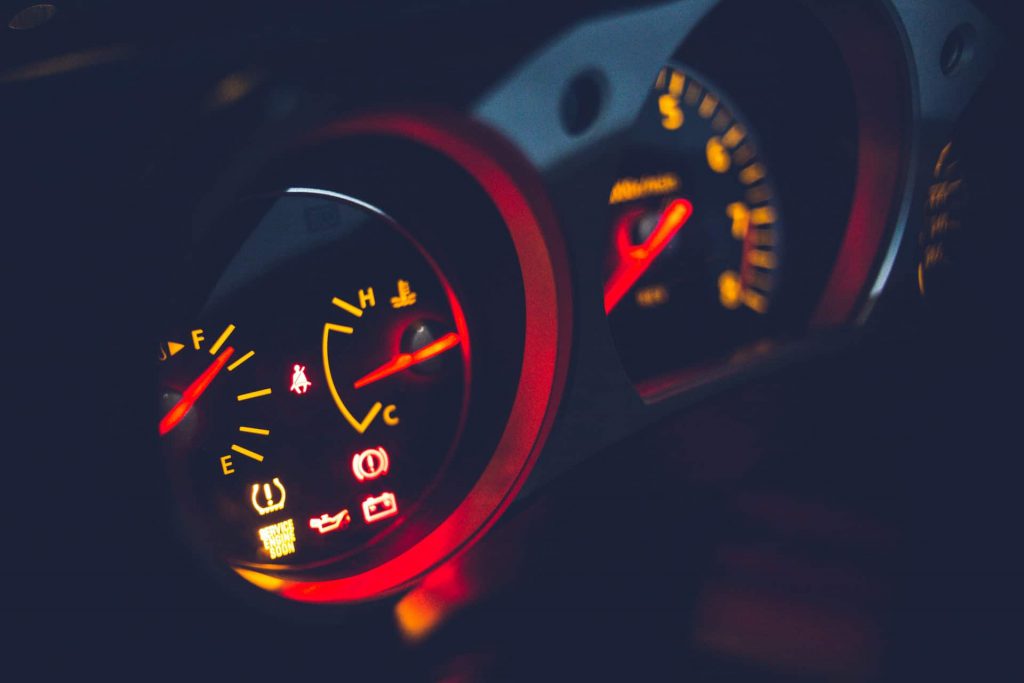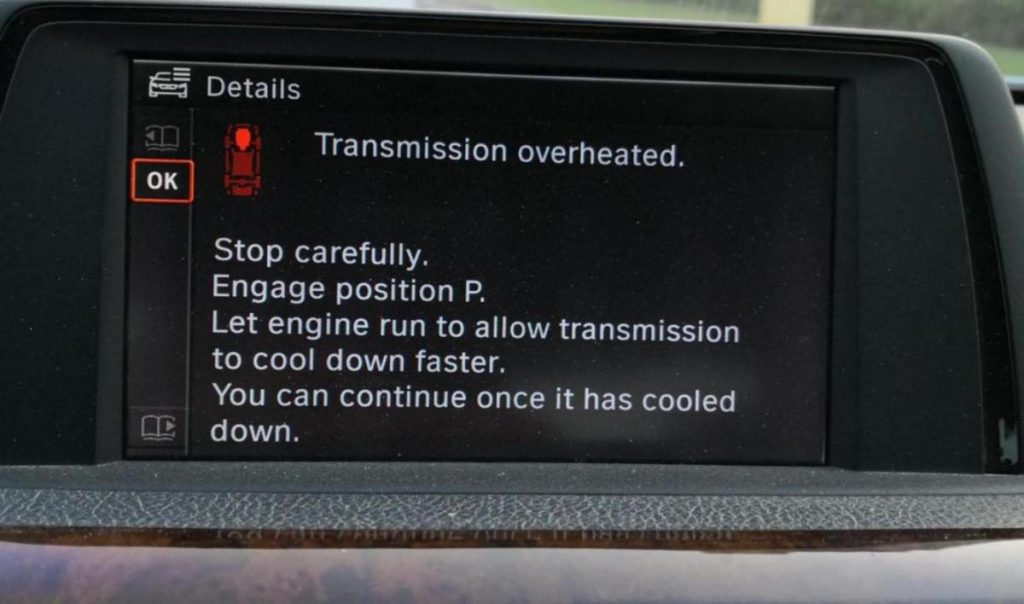Just like the engine, due to its high operational frequency, the car transmission is susceptible to overheating. When the transmission overheats, it can disrupt this essential process, resulting in diminished performance and potentially expensive repairs. That’s why in this topic we will discuss in detail the causes and symptoms of transmission overheating.
Contents
What Should My Transmission Temperature Be?
Most car transmissions are designed to operate within an ideal temperature range of 175 to 200 degrees Fahrenheit (79 to 93 degrees Celsius). Exceeding this limit by 20 degrees doubles the risk of prematurely diminishing the lifespan of the transmission. When the temperature reaches 240 degrees Fahrenheit (116 degrees Celsius), the organic oil present in the gearbox can transform into varnish, resulting in inadequate lubrication for the transmission’s internal moving components.
It’s worth noting that the transmission temperature can fluctuate depending on driving conditions, such as heavy loads, stop-and-go traffic, or towing. Some vehicles may also have a transmission temperature gauge or warning light that can provide real-time information about the transmission temperature, so you can monitor it to have timely action.
When the transmission overheats, it means that at that time, the temperature of the transmission fluid exceeded the recommended operating range. This problem can occur due to some of the reasons:

What Causes A Transmission To Overheat?
Transmission overheating can be caused by low fluid, insufficient lubrication, impurities, or poor-quality lubricating oil. In addition, some mechanical issues such as size deviations, friction between parts, and hard bearings will also cause the gearbox to overheat. Let’s go through each cause to understand more:
Low transmission fluid
Transmission fluid is an important catalyst that helps the machine parts inside the gearbox cool and operate smoothly and stably. Lack of transmission fluid will cause the transmission to overheat and even cause a fire or explosion due to excessive friction between metal parts without lubrication. Additionally, low fluid levels or degraded fluid can impair the transmission’s ability to dissipate heat effectively, leading to overheating. That’s why you should check the fluid level regularly and change it according to the recommendation from the manufacturer.
Too much transmission fluid
When there is an excessive amount of transmission fluid, it can lead to increased fluid pressure. This can cause the fluid to foam or froth, which reduces its ability to effectively lubricate and cool the transmission components. Inadequate cooling and lubrication can result in increased friction and heat buildup, causing overheating.
Additionally, the excess fluid can also put strain on the transmission’s seals and cause them to leak. Fluid leaks further contribute to a drop in fluid levels and can exacerbate the overheating issue.
>> Read more: Problems to Face When There Is Too Much Transmission Fluid
Faulty transmission cooler
The transmission cooler is responsible for cooling the transmission fluid. If the cooler is damaged, clogged, or not functioning correctly, it will impede the cooling process and cause the transmission to overheat.
Overload the transmission
Driving conditions that place excessive demands on the transmission, such as towing heavy loads or driving in hilly terrain, can cause the transmission to overheat. These situations require the transmission to work harder, generating more heat than usual.
Malfunctioning or slipping clutch (manual transmission)
In a manual transmission, a slipping clutch can generate excessive heat due to the friction between the clutch components. This can lead to transmission overheating.
Watch more:
Transmission Overheating Symptoms You Shouldn’t Ignore
An overheating transmission can lead to several issues and potential damage. Here are some common signs to look out for:
1. Burning smell
An overheating transmission can often result in a distinct burning odor as the transmission oil begins to burn, causing the transmission to function inefficiently. This occurrence is commonly observed in vehicles that endure continuous operation, long-distance journeys, or heavy loads. If left unaddressed, the transmission’s overall performance will significantly deteriorate.
This situation may arise due to improper clutch usage by the driver or when the transmission fluid is low or degraded, causing to overheating and subsequent burning. Consequently, It contributes to the wear and contamination of the clutch pads.
2. Fluid leakage
Overheating can cause seals and gaskets in the transmission to degrade or fail, resulting in fluid leaks. Unlike engine oil, the transmission does not consume oil during operation. If the transmission fluid leaks, the transmission will operate with low fluid levels, increasing the possibility of overheating. This is the fastest way for the transmission to fail.
If you see a puddle of red liquid underneath the vehicle, take the vehicle to a service center immediately.
3. Slipping gears
When a transmission overheats, it can cause a decrease in the viscosity and effectiveness of the transmission fluid. This reduction in fluid viscosity can result in insufficient hydraulic pressure, causing the transmission to struggle to engage and maintain the appropriate gear.
As a result, you may experience slipping gears, which manifests as a delay in gear engagement, a lack of power, or a sensation of the engine revving without a corresponding increase in vehicle speed. The transmission may also exhibit erratic shifting behavior, such as abrupt or delayed gear shifts or getting stuck in a specific gear.
4. Warning light
Nowadays, most vehicles are equipped with sensors and warning systems that monitor various aspects of the vehicle’s operation, including the transmission temperature.
When the transmission temperature exceeds a certain threshold, a dedicated warning light or an indicator on the dashboard may illuminate to alert the driver of the overheating issue. The specific symbol or wording of the warning light can vary depending on the vehicle’s make and model.
5. Loss of power
Overheating can also damage the torque converter, a component responsible for transferring power from the engine to the transmission. A damaged or malfunctioning torque converter can lead to a loss of power delivery.
6. Strange noise
While strange noises can indicate transmission problems, they are not typically directly associated with transmission overheating. However, overheating can contribute to other issues within the transmission that may produce unusual sounds. For example, overheating can cause damage to various transmission components, such as clutches, gears, or bearings. If these components become worn or misaligned due to overheating, they may produce abnormal noises like grinding, whining, or clunking.
>> Related post: Can You Use Transmission Fluid for Power Steering Pump?
What To Do If The Transmission Overheats?
If you notice signs of an overheating transmission, such as a burning smell, fluid leaks, or warning lights on the dashboard, it’s important to address the issue promptly. Safely pull over, allow the transmission to cool down, and check the transmission fluid level and condition. If the problem persists, it’s advisable to have your vehicle inspected by a qualified mechanic to diagnose and repair any underlying issues causing the overheating:

Safely pull over
As soon as you notice signs of transmission overheating, find a safe place to pull over. Avoid abrupt braking or sudden maneuvers to minimize stress on the transmission.
Turn off the engine
Once you have parked the vehicle, turn off the engine. This will help prevent further heat buildup and potential damage to the transmission.
Allow the transmission to cool down
Give the transmission sufficient time to cool down before attempting any further actions. This can take anywhere from 30 minutes to several hours, depending on the severity of the overheating.
Check transmission fluid level and condition
While waiting for the transmission to cool, you can check the transmission fluid level and condition. Ensure the vehicle is on a level surface and follow the manufacturer’s instructions for checking the fluid. If the fluid level is low or appears burnt or contaminated, it may indicate an underlying issue contributing to the overheating.
Address the cause
Once the transmission has cooled down and you have checked the fluid, it’s important to address the underlying cause of the overheating. Common causes can include low fluid levels, fluid leaks, a faulty cooling system, or driving under heavy loads or in extreme conditions. If you are unable to determine the cause or if the issue persists, it is recommended to seek assistance from a qualified mechanic.
Avoid driving until resolved
To prevent further damage, it’s best to avoid driving the vehicle until the cause of the transmission overheating has been identified and resolved. Continuing to drive with an overheating transmission can lead to severe damage and a complete transmission failure.
Remember, transmission overheating is a serious concern that should not be ignored. Taking prompt action and addressing the underlying cause can help prevent costly repairs and ensure the longevity of your transmission.



